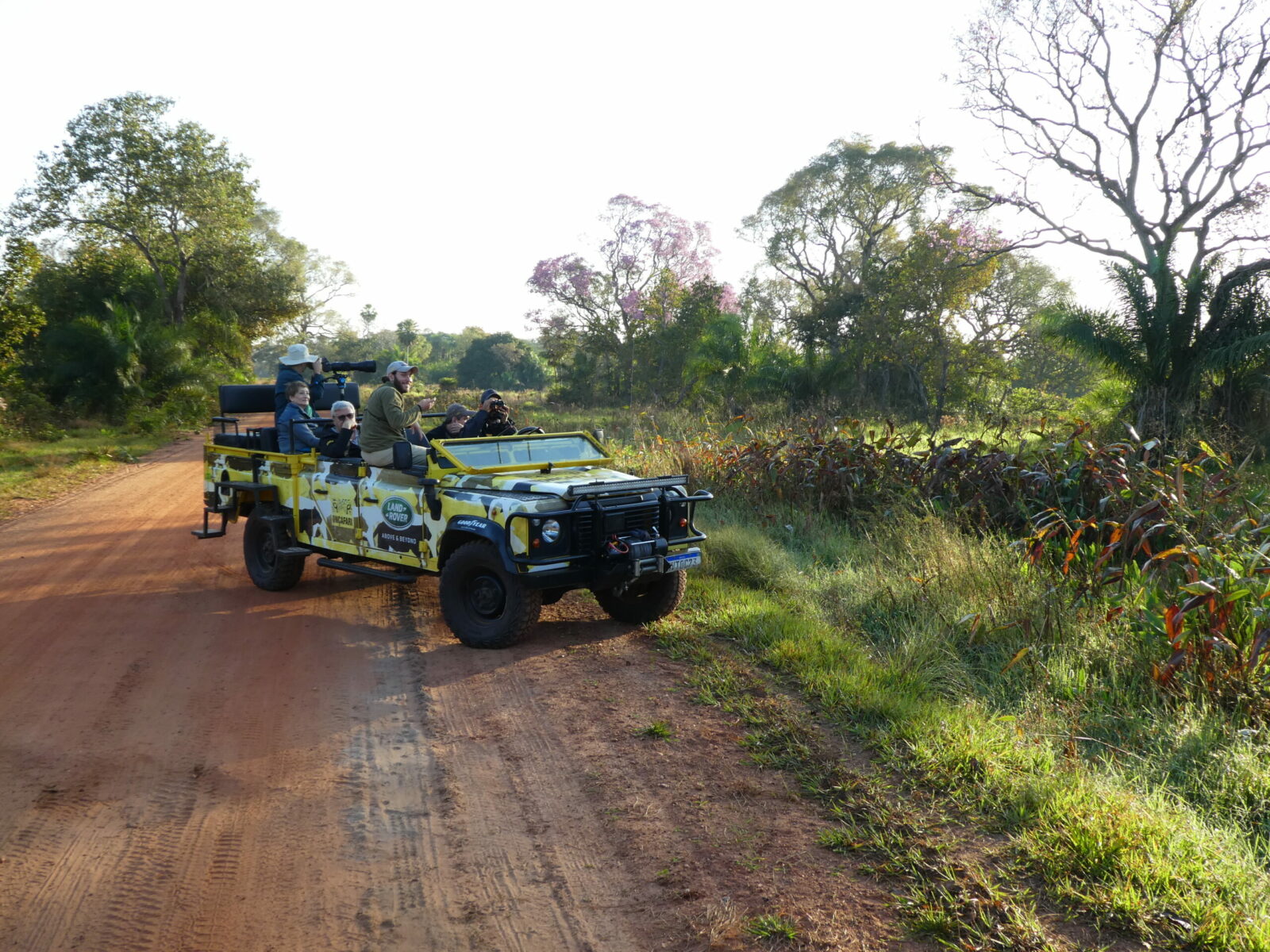Would today be our lucky day? Would we see that which had compelled us to travel over 24 hours from home to find? For what, you might wonder, were we looking? Why, the elusive jaguar, of course. And spoiler alert: yes, indeed we would find them.
My colleague Jennifer Gillmore and I departed Caiman Ecological Refuge, our base in Brazil’s southern Pantanal region, bright and early, in complete darkness at 5:30am. As we bumped along the dirt road in our safari jeep, the sun began to rise and oranges, pinks and reds lit up the sky.
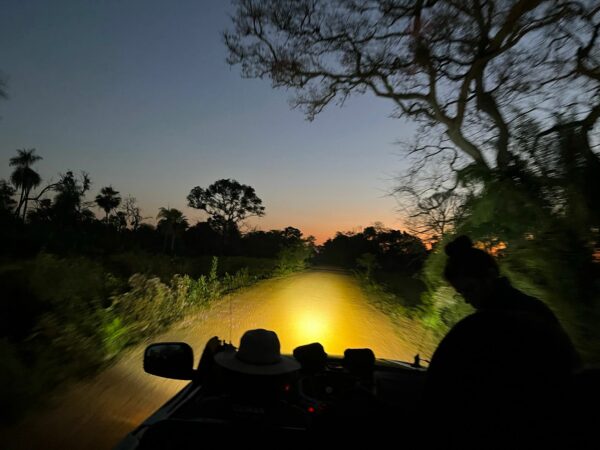
Just after dawn, around 6:20am, we had our first jaguar sighting— Jaci, a one-and-a-half-year-old female lounging by a pond next to the side of the road. July is the Pantanal’s dry season, and the best time to visit because vehicles can reach almost anywhere. In the wet season, January through March, water covers the land and thus it’s more challenging to access the wildlife. Thankfully, we found ourselves in Brazil not only during the right season, but also lucked into not having to venture too far to find this beautiful feline.
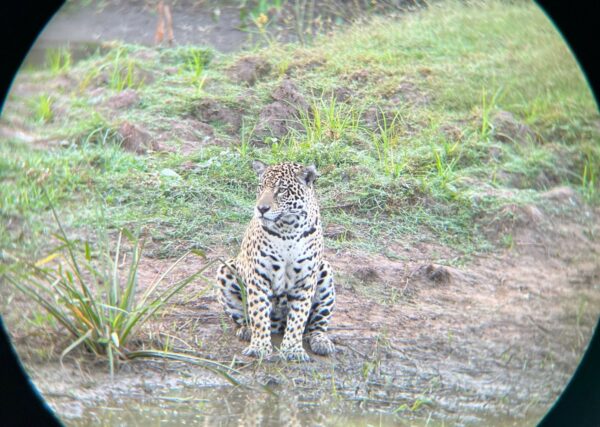
It is in large part due to the work of the Oncafari project (pronounced “on safari”), a nonprofit that conducts research and monitors jaguars in the Pantanal, that these animals have become habituated to the presence of humans. The organization achieved this by leaving a vehicle in areas where jaguars would congregate. This allowed them to get used to the presence of vehicles. Seeing that no threat was posed, the jaguars became accustomed to not only the jeeps, but also eventually the humans inside them.
We continued down the road for just a few minutes and soon came across a second jaguar. This one was Jaci’s mother, Aracy, who was likely giving Jaci a chance to hunt on her own while remaining nearby in order to reconvene as needed. Our guide, a biologist named Beatrice, and driver, Mario, were able to easily identify her because, just like humans, jaguars possess their own unique physical traits. They could use the markings and patterns to quickly know who we had found!
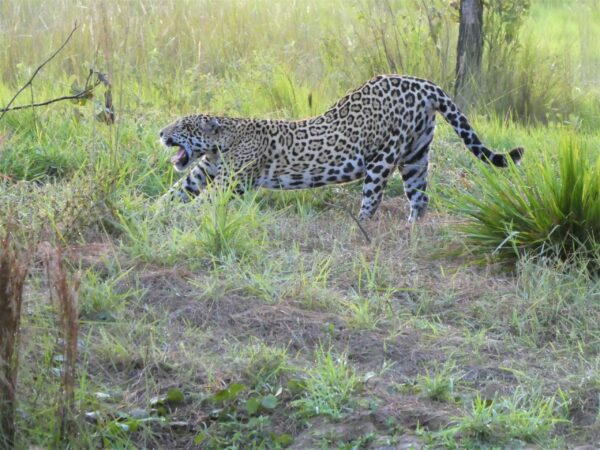
As part of the Oncafari team, and to assist with the program’s ongoing field work, Beatrice was sure to record the GPS location of both sightings, the time of day, how long the animal was in view, and what they were doing. It is by observing the jaguars that the project learns more about their behaviors, how they live, and the ways they move throughout the region. Scientists then use this information to raise awareness and teach locals and tourists alike about the importance of, and need to protect, the jaguars.
The Oncafari project has a wide-reaching effect on the region. The nonprofit employs more than 100 people, and in doing so, brings better paying jobs to many of the locals. They also work to transform the current cultural view of jaguars as something profitable to hunt. Instead, they educate the communities about the ways in which ecotourism benefits the animals, the land and ultimately creates a sustainable income source. By protecting the jaguars and their habitat, the animals will thrive, which in turn will attract more and more tourists, and their dollars, to the region.
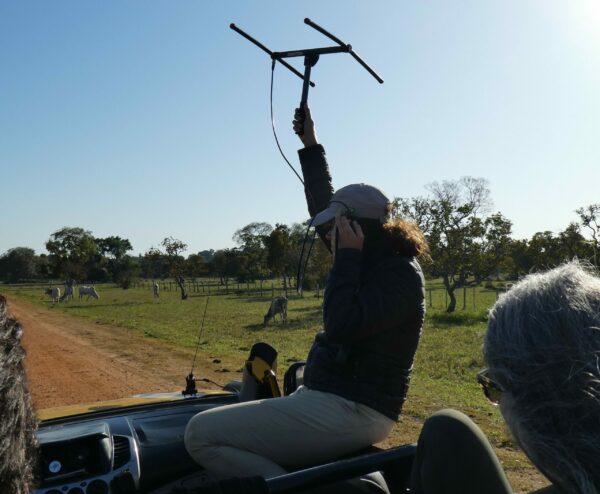
After spending some time with Aracy, Beatrice pulled out her tracking device. It seemed a little outdated (not that I am knowledgeable or familiar with the tracking technology), and I was skeptical that she’d actually find any signal in this vast area. But sure enough, she picked up on a collared male, and before I knew it, we were off-roading through cattle pastures. (Note: There are only four collared jaguars in the area, so most of the sightings are by chance.) Soon, we spotted at least a dozen vultures feasting on what must have been this jaguar’s breakfast.
Mario and Beatrice also noticed a hummock, or an island of vegetation, and with a few whacks of the machete, we were able to drive through the palm trees. It is here that we discovered the full bellied male jaguar, panting in the shade. He was so stuffed from his breakfast that he could hardly be bothered by our presence, his body working overtime to process his large meal. After ten minutes, he sauntered from the shady hummock and on to the next covered island. We then headed back to the lodge for our own breakfast, to enjoy time by the pool, and to avoid the midday heat.
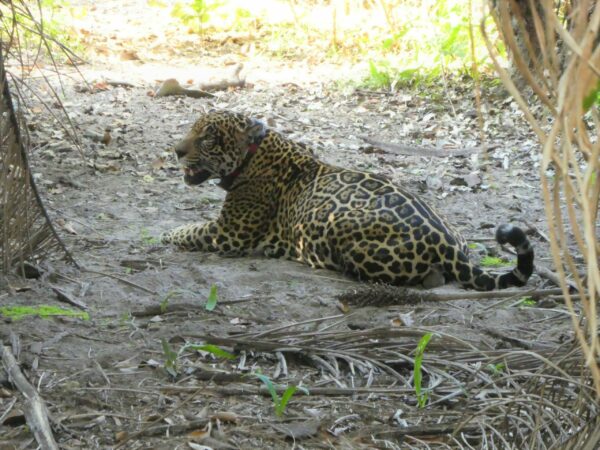
At 4pm, we hopped back into our Oncafari vehicle to see if our luck would continue, and whether we might observe more jaguars. Amazingly, nearly 11 hours after our first sighting of Aracy, we found her again. This time, she was hanging out in some tall grass, somewhat hidden but still visible enough that we, her captivated audience, could fawn over her. Beatrice told us that Aracy is a show-off and likes the attention. It was amusing to see that there were some character traits that even jaguars demonstrated.
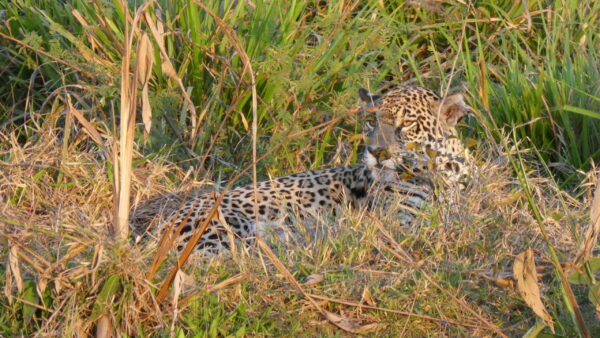
Over the radio, we then heard of another sighting, so we headed in that direction. This time, we passed the cattle pastures we’d driven through earlier in the day and ventured deeper into the Pantanal. We passed through at least half a dozen wire or wooden fences before finally reaching what would become my favorite sighting of the day—a mother and her cub playing in a field. They seemed to be wandering aimlessly in and out of covered vegetation, but more likely than not, they were on the prowl searching for their evening meal as dusk turned to complete darkness again.
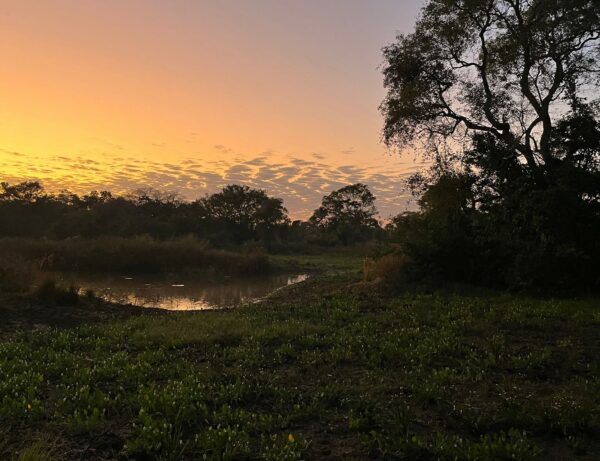
Having seen five jaguars in just one day, I felt a sense of accomplishment as we turned back toward the lodge. On the drive back, the guide used a spotlight to scan the terrain (like sweeping) to check for any wildlife. It seemed impossible that we’d spot anything while traveling at 30mph and in the pitch black. But we were looking for the reflection of animals’ eyes and sure enough, we saw two sets looking out at us. One belonged to none other than Aracy (for the third time) and, the other, to Jaci. One of them had caught an armadillo and slid back into the brush to eat in privacy while the other was still on the lookout for her meal. It was surreal and so unexpected to see these two jaguars multiple times in one day, and especially to see them with a kill.
All in all, it was a successful day full of excitement, wonder and awe. I’ll never forget seeing these majestic animals in their natural surroundings and learning about the amazing efforts to protect them.
